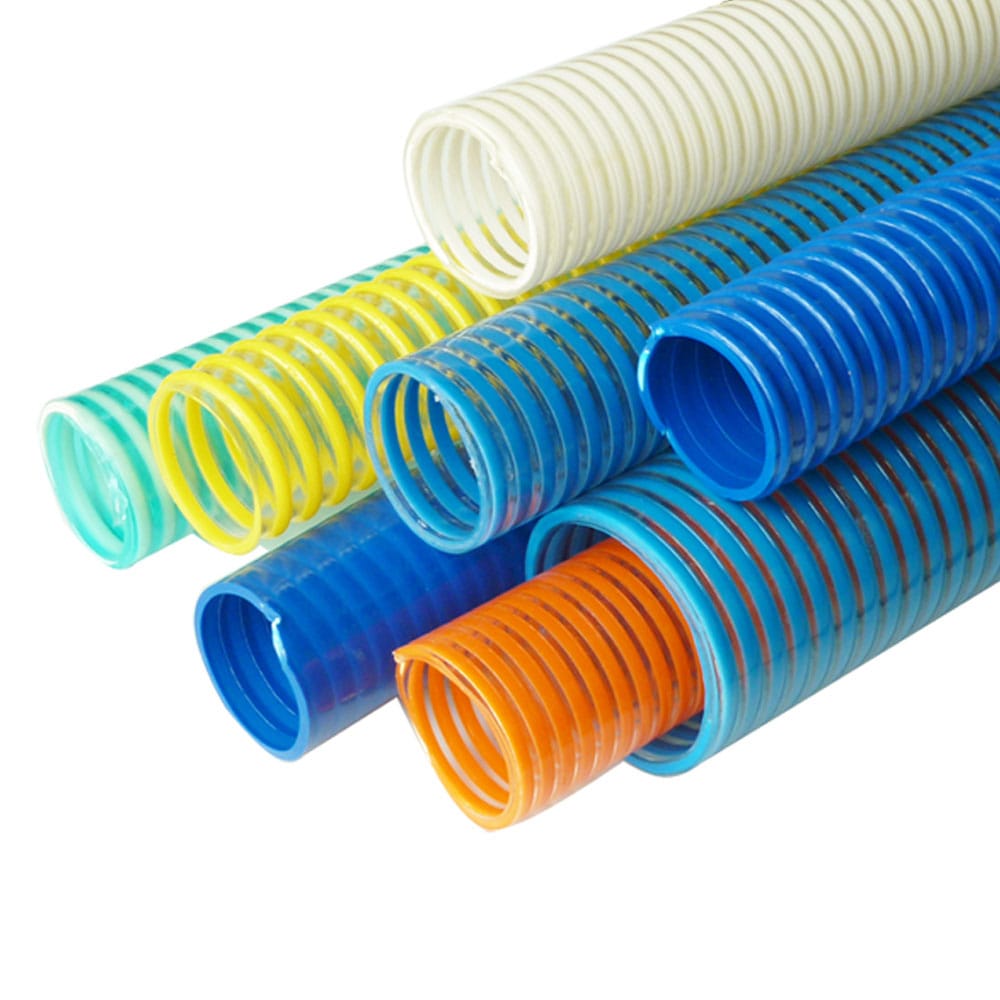Proper storage and maintenance are essential for maximizing the lifespan and performance of your PVC garden hose. PVC hoses, known for their lightweight design and affordability, can serve you well for years if cared for properly. In this guide, we’ll cover best practices for storing, cleaning, and maintaining your PVC Garden Hose to keep it in peak condition season after season.
Why Proper Storage and Maintenance Matters
A PVC garden hose, although durable and resistant to general wear, is susceptible to damage from extreme weather, heavy kinks, and improper storage. These factors can lead to cracks, leaks, and even a shortened lifespan. By following a few simple steps, you can extend the life of your hose, reduce costs, and ensure it remains easy to handle and flexible for all your gardening needs.
1. Keep It Out of Direct Sunlight
Why: PVC material can be affected by prolonged sun exposure. The UV rays from the sun can cause the hose material to degrade over time, making it brittle, more likely to crack, and less flexible.
Solution: When you’re done using your hose, avoid leaving it in direct sunlight for extended periods. Instead, store it in a shaded area or use a hose reel with a cover to protect it from UV rays.
2. Drain the Hose After Each Use
Why: Leftover water inside the hose can expand and freeze during colder months, which can cause cracking or leaks. Even in warmer weather, stagnant water inside the hose can lead to mold and mildew buildup.
Solution: After each use, take a few minutes to drain any remaining water from the hose. This simple step can prevent damage and is especially important if you plan to store the hose for an extended period.
3. Avoid Kinks and Twists
Why: Kinks and twists can weaken the hose material, leading to splits and leaks over time. PVC hoses, while durable, can still suffer damage from repeated kinking, especially if the material is stiff in colder weather.
Solution: When you use the hose, avoid pulling it sharply around corners or dragging it by the nozzle. Instead, unwind it smoothly from a hose reel and lay it out straight. Invest in a kink-resistant hose or hose reel, and when coiling, use a circular motion rather than twisting it.
4. Store the Hose Indoors in Winter
Why: PVC material can become brittle in extremely cold temperatures. Exposure to frost or ice can cause cracks and make the hose harder to handle, potentially leading to breakage when you try to use it in the spring.
Solution: Before winter, disconnect the hose from any outdoor faucets and drain it completely. Store the hose indoors in a garage, shed, or basement where temperatures are warmer and more stable. If storing indoors is not an option, cover the hose with an insulating material or store it in a covered hose reel to protect it from freezing temperatures.
5. Regular Cleaning to Prevent Buildup
Why: Dirt, debris, and algae can build up inside the hose, especially if water is left standing inside. This buildup can not only affect water flow but can also lead to bacterial growth, which might affect the quality of water if you’re using it for watering edible plants.
Solution: Every few weeks, flush the hose with clean water to remove any dirt and debris inside. If there’s stubborn buildup, you can use a solution of mild soap and water. Fill the hose with this solution, let it sit for a few minutes, and then rinse thoroughly. For more thorough cleaning, consider using a hose cleaning brush or a narrow bottle brush to scrub the inside.
6. Use a Hose Reel for Easy Storage
Why: Coiling a PVC garden hose on the ground or looping it loosely around objects can lead to twists, kinks, and uneven wear over time.
Solution: A hose reel not only makes it easier to store your hose but also reduces the chances of it tangling or kinking. Choose a reel that can be mounted on a wall or stored in a shed. A covered reel provides additional protection against weather elements. When winding the hose onto the reel, do so slowly and carefully to avoid tight coils that can cause strain on the material.
7. Avoid Dragging the Hose Over Rough Surfaces
Why: PVC hoses are durable, but dragging them over rough surfaces like concrete, gravel, or sharp-edged garden borders can wear down the outer layer, leading to abrasions and, eventually, leaks.
Solution: Lift and move the hose instead of dragging it whenever possible. If you frequently need to use the hose over hard or abrasive surfaces, consider placing a protective sleeve on the hose or investing in rubber bumpers. A garden cart or hose guide can also help protect the hose from abrasive surfaces.
8. Check for Leaks and Damage Regularly
Why: Small leaks or minor cracks can be easy to overlook but can quickly worsen if left unaddressed. Regular inspection helps you catch problems early, saving you from costly repairs or replacements.
Solution: Every few weeks, inspect the entire length of the hose for signs of wear, cracks, or leaks. Pay particular attention to areas near fittings and the nozzle, as these are often stress points. If you find small leaks, repair them immediately with waterproof tape or a hose repair kit. For larger cracks or severely damaged sections, consider replacing that section of the hose or investing in a new one.
9. Choose the Right Nozzle and Fittings
Why: The type of nozzle and fittings you use can affect both the ease of handling and the lifespan of your PVC garden hose. Metal fittings, for instance, tend to be more durable but may put extra pressure on the hose ends if they’re too heavy.
Solution: Select lightweight yet durable fittings that are compatible with your PVC hose. Look for brass or heavy-duty plastic fittings with rubber washers to prevent leaks. If you frequently change nozzles, a quick-connect system can make this process smoother and reduce wear on the hose ends.
10. Invest in High-Quality Hose Accessories
Why: Accessories like hose guides, protective sleeves, and storage racks can make a big difference in the lifespan of your hose by minimizing wear and tear.
Solution: Consider adding guides to prevent the hose from bending or kinking when you pull it around corners. Protective sleeves can add an extra layer of protection to prevent abrasions. Additionally, a quality storage rack or reel will help keep your hose organized, protected, and ready for use.
Final Thoughts
A PVC garden hose is a reliable and budget-friendly choice for gardeners, but like any tool, it requires proper care to ensure long-lasting performance. By following these storage and maintenance tips, you’ll not only protect your hose from damage but also make your gardening tasks easier and more efficient.
Investing time in care and maintenance will reward you with a hose that’s always ready for action, from watering delicate plants to washing down your patio.




